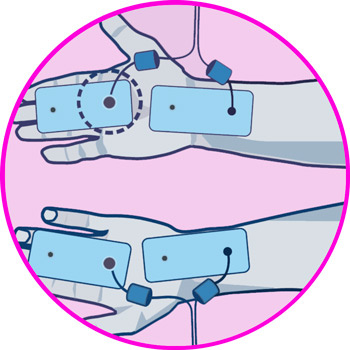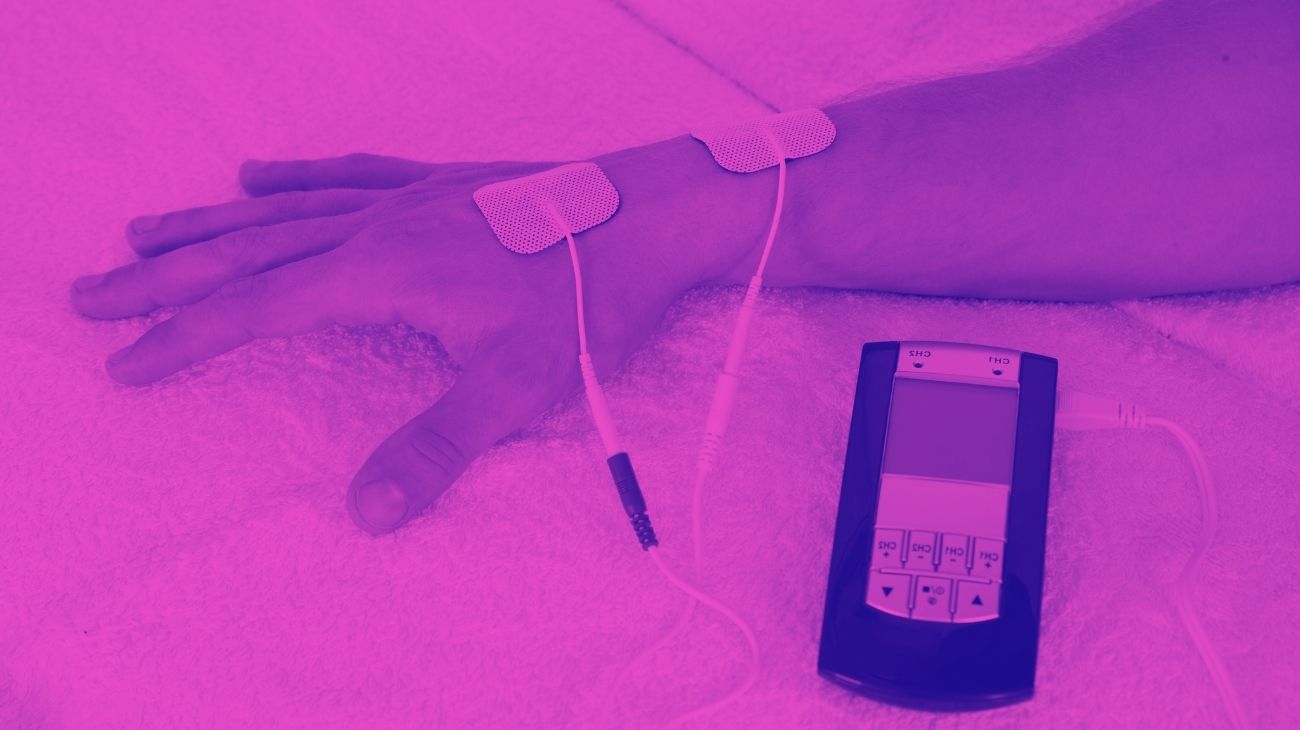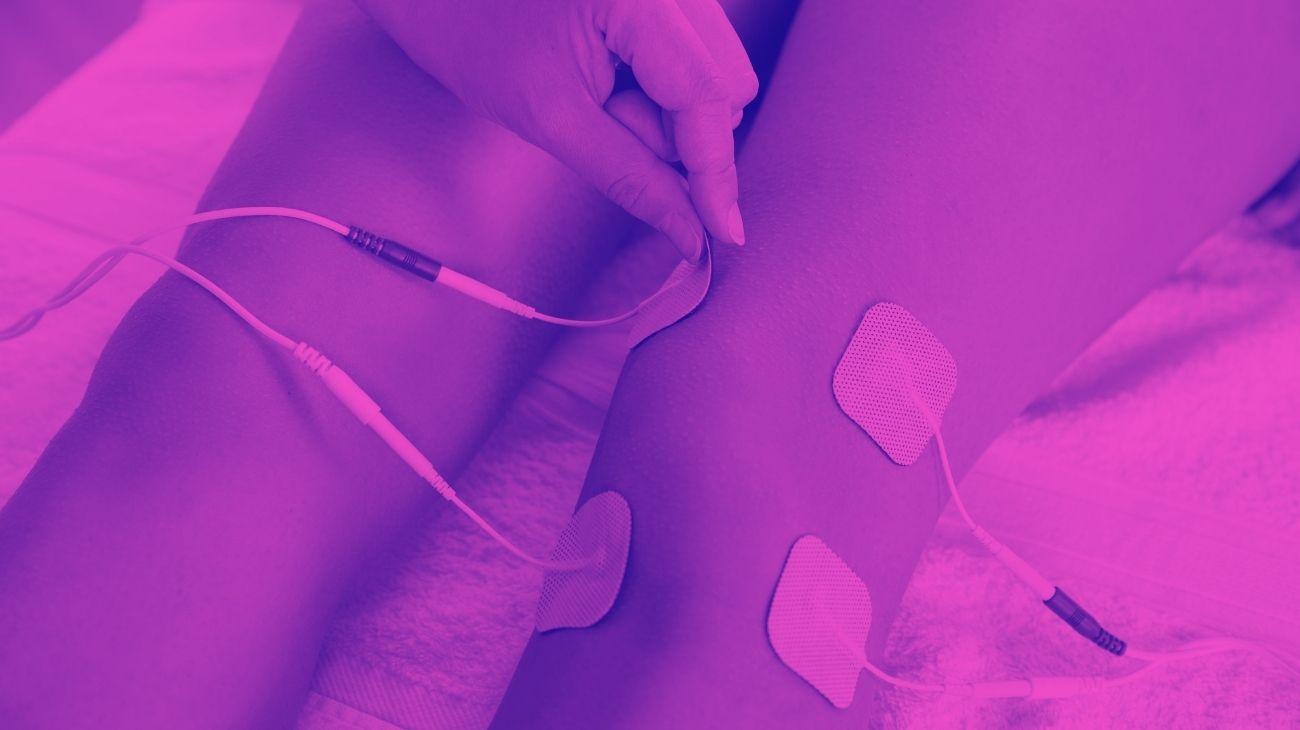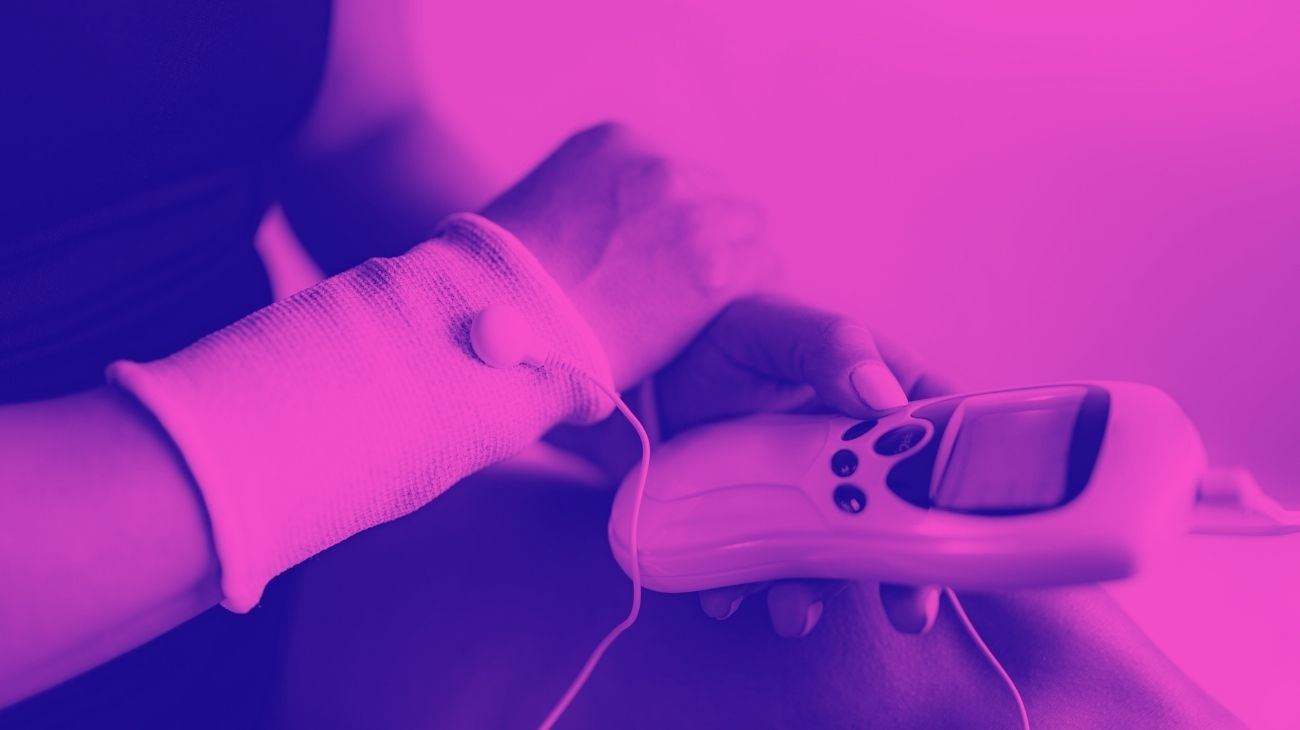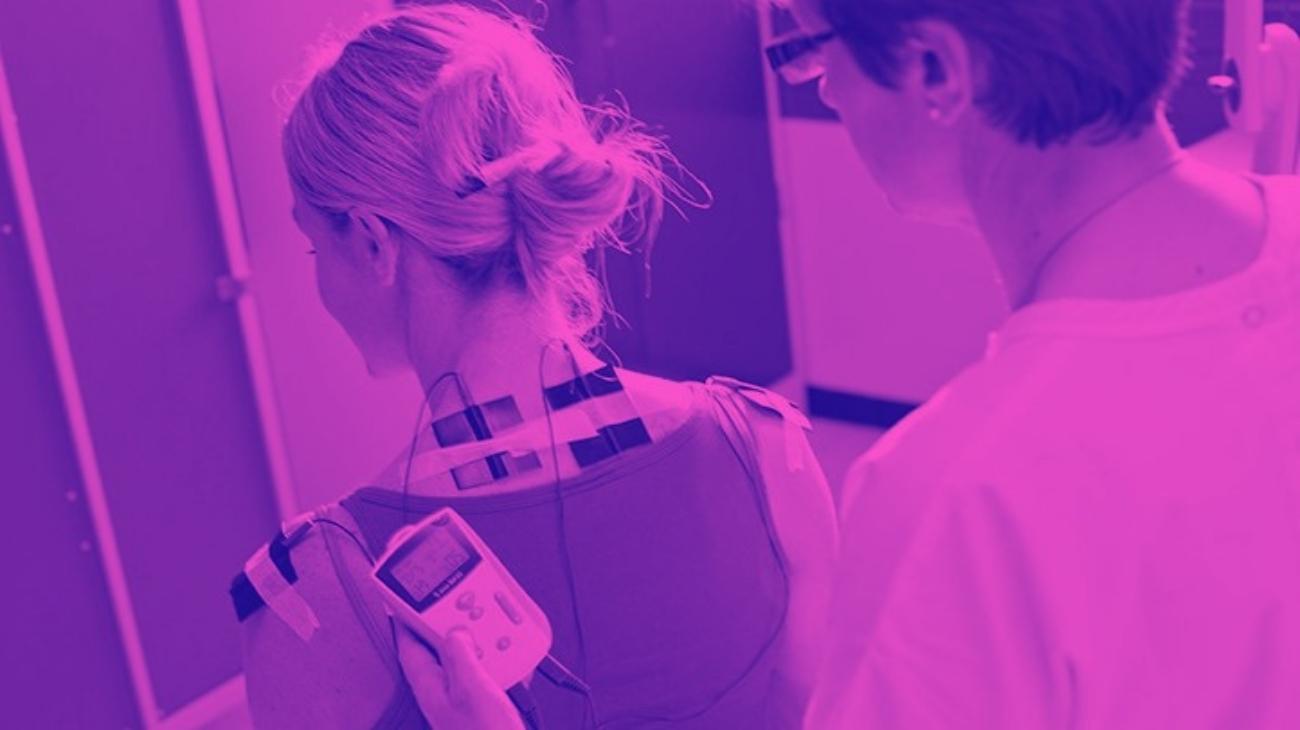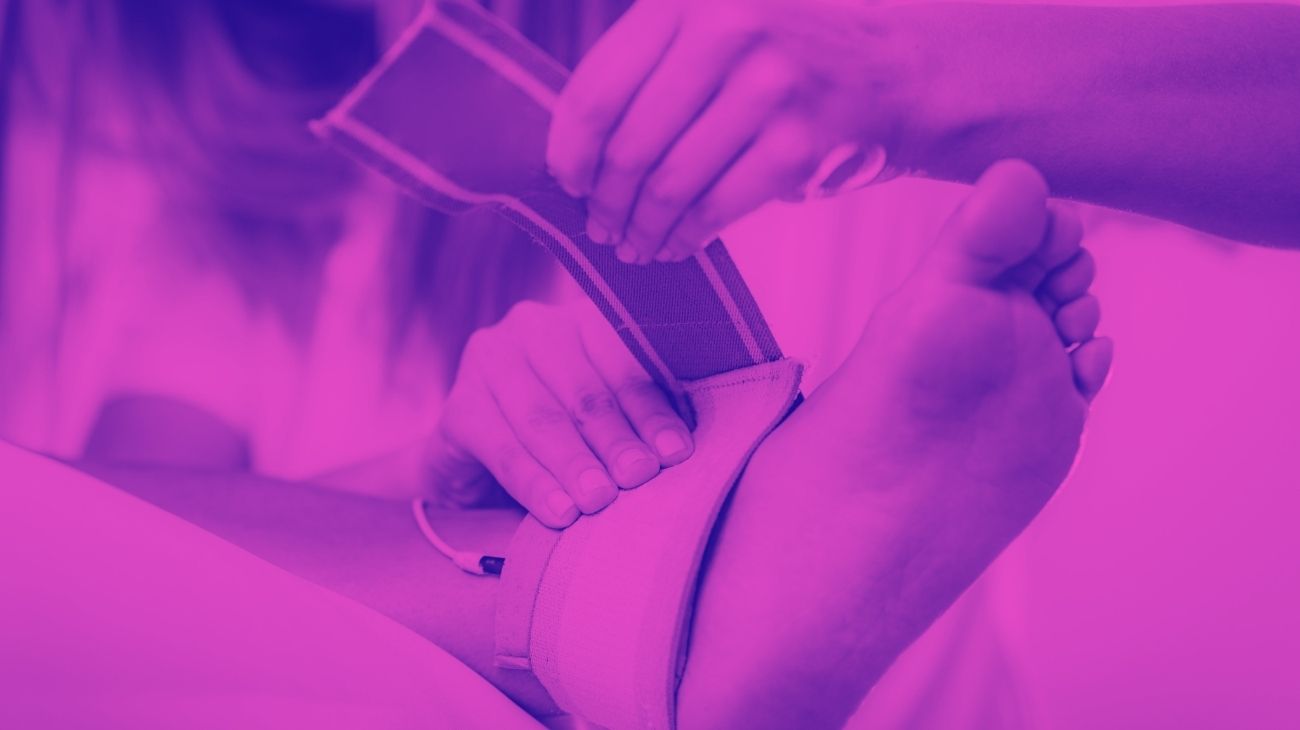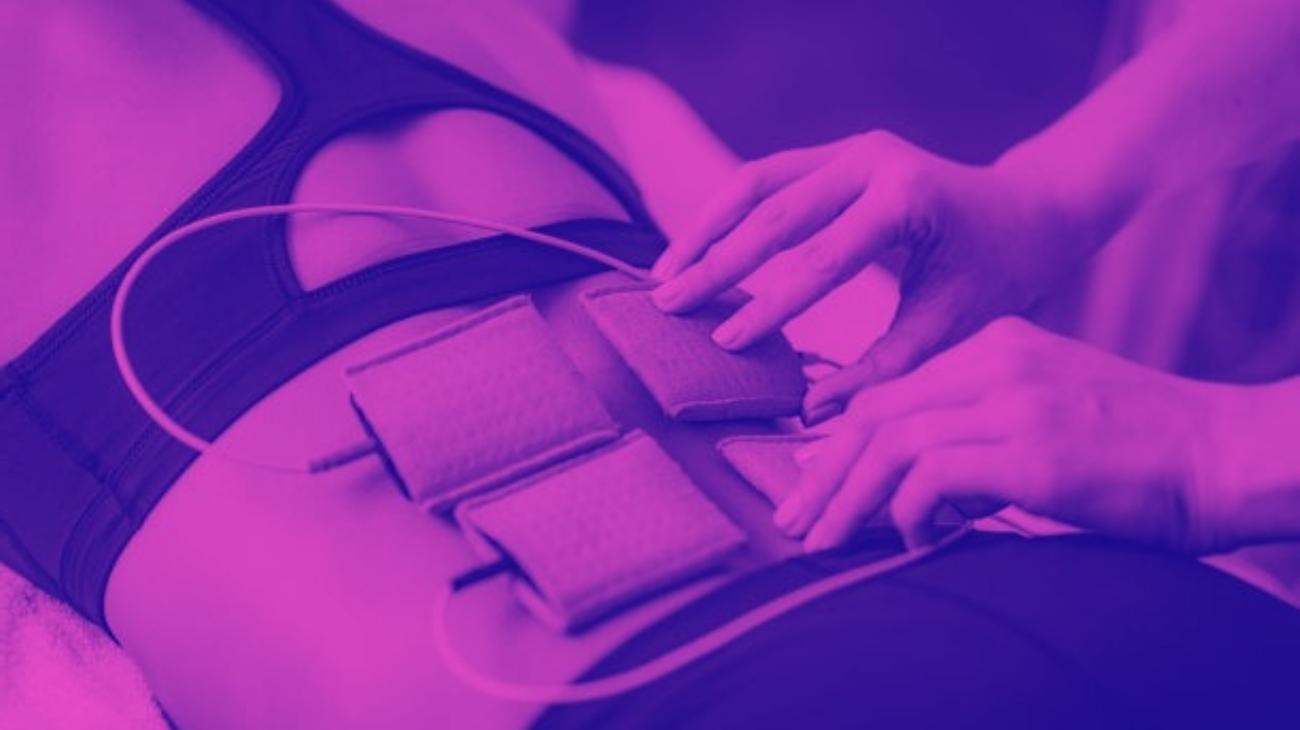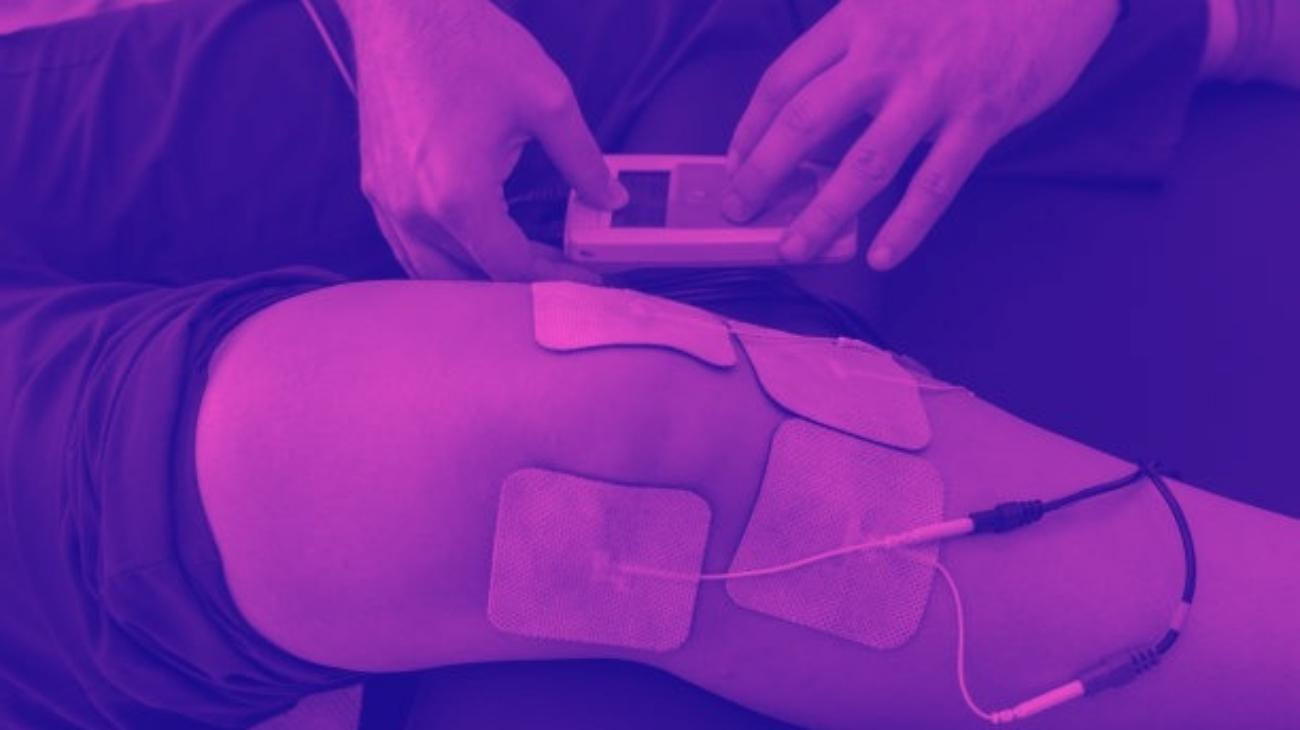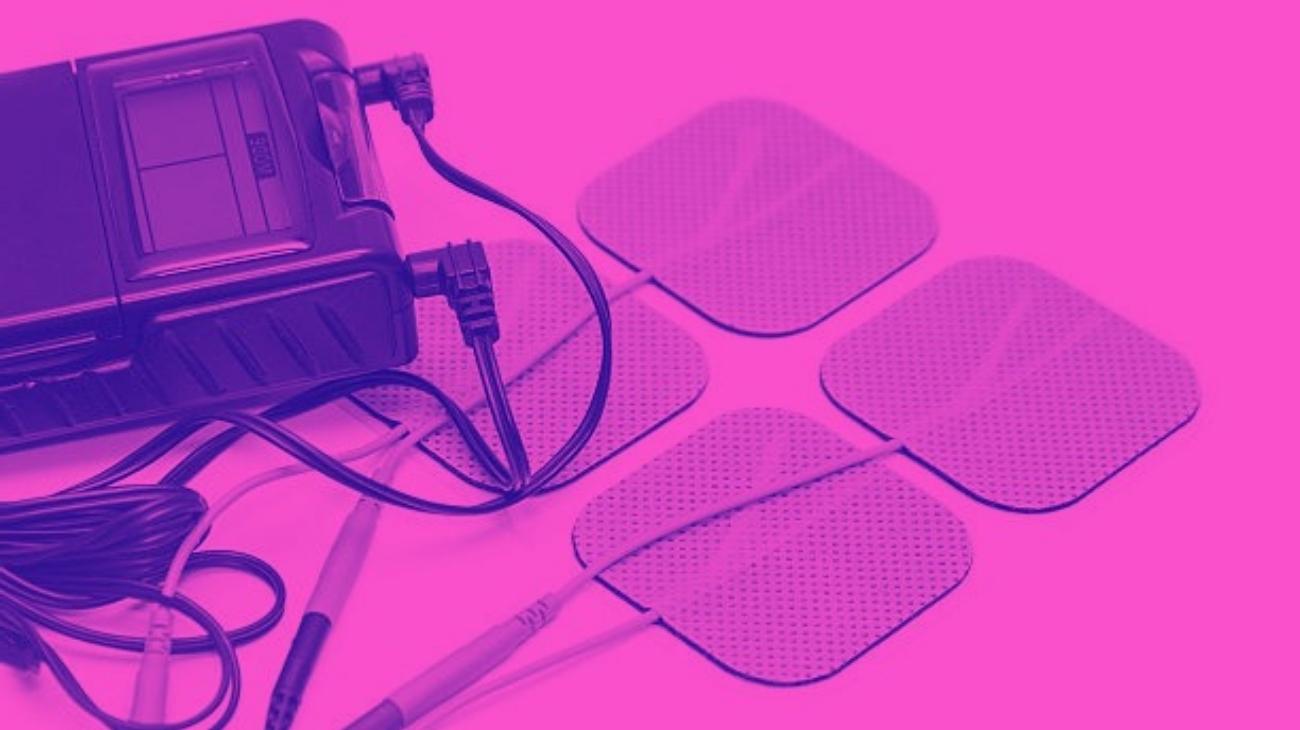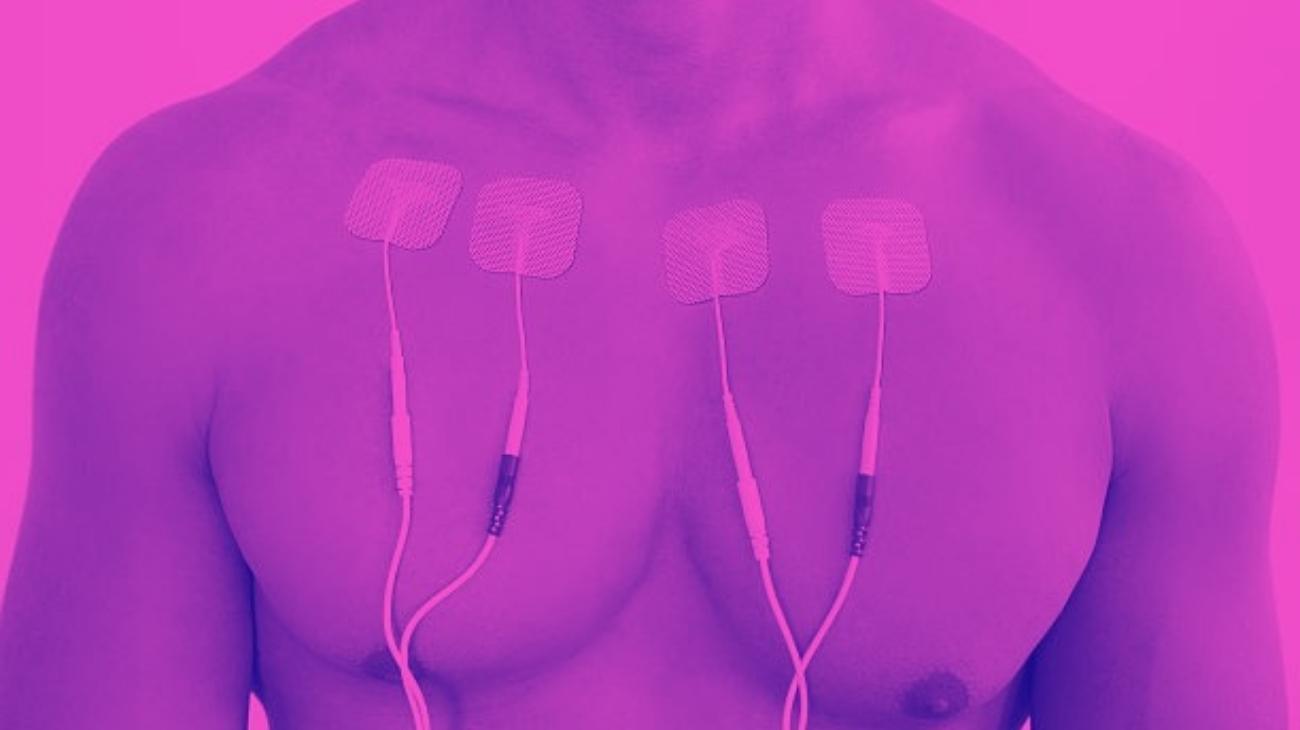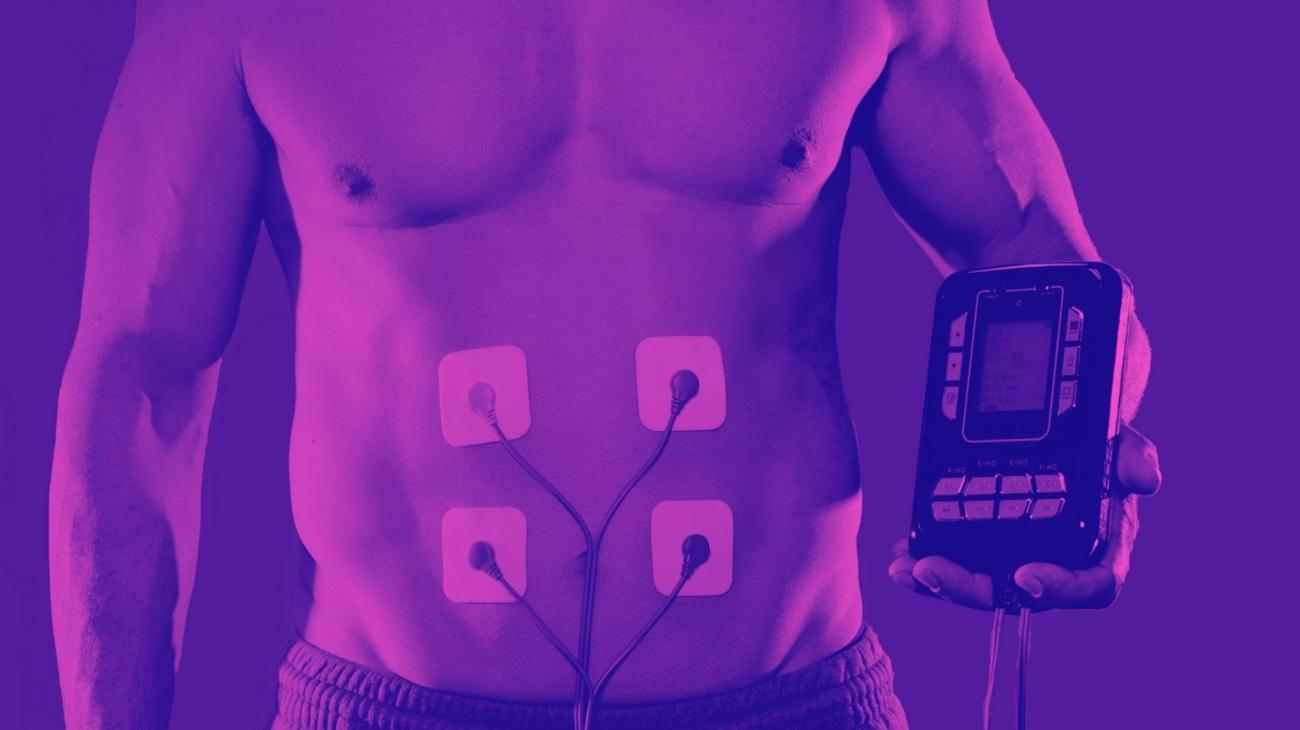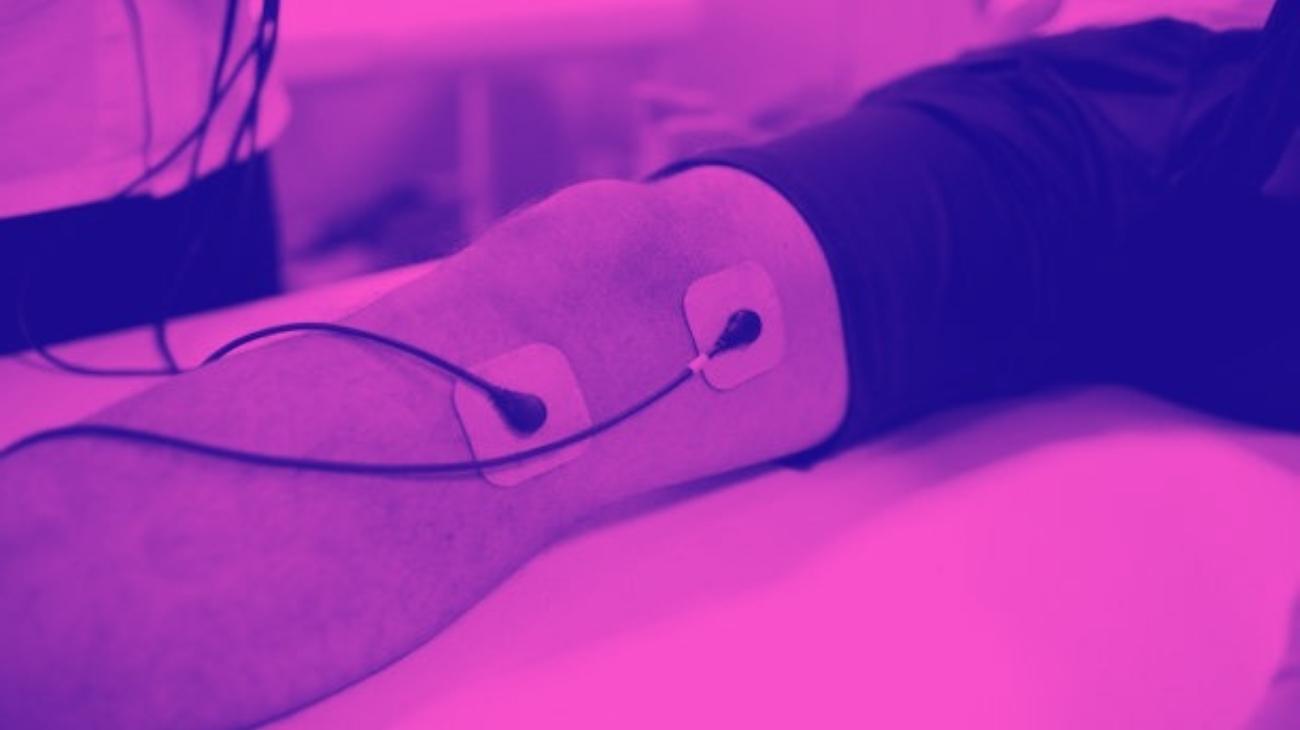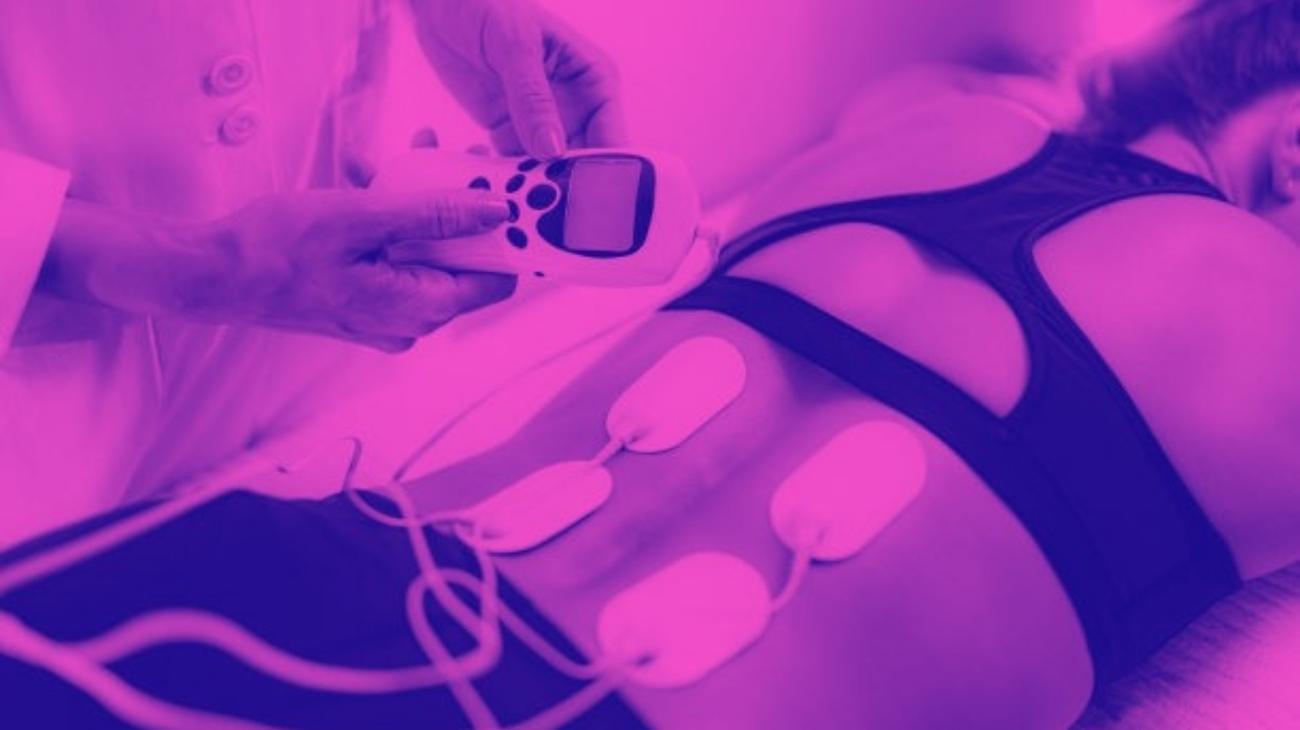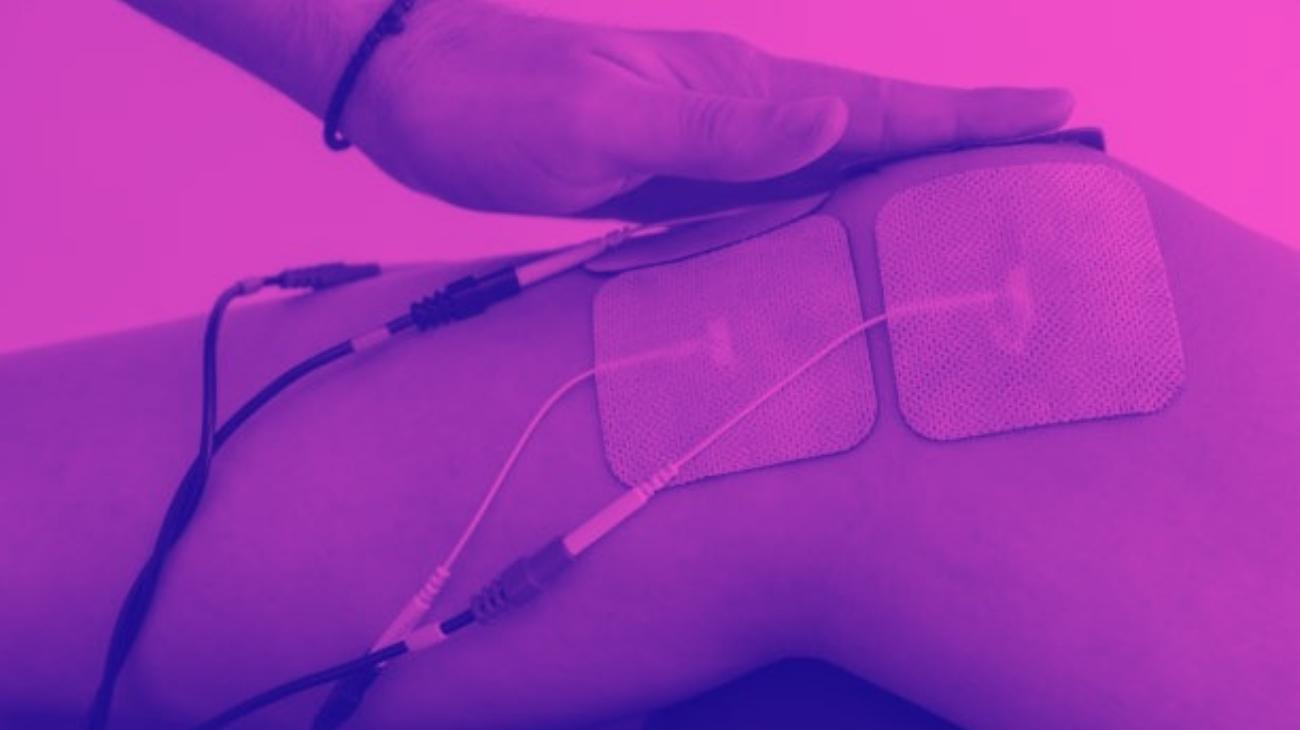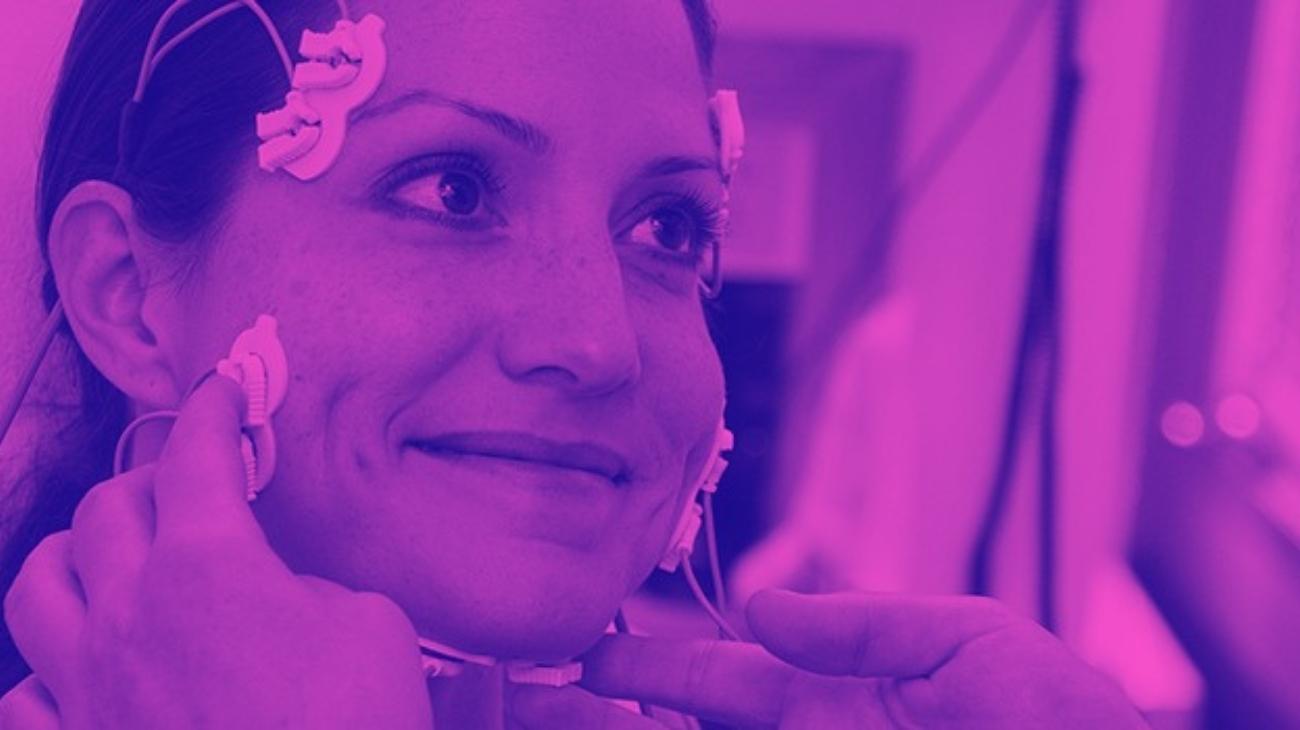- How to use TENS machines to relieve tendonitis pain?
- Best TENS units to treat nerve damage
- How to use EMS to strengthen muscles and avoid tendon damage?
- Best EMS machines to prevent tendon inflammation
- Video: How to place electrodes pads for tendonitis pain?
- More types of EMS electrostimulators and TENS machines you should know
- What is tendonitis and what are the causes?
- What are the most common types of tendonitis?
- Differences between TENS and EMS: Which is better for treating tendon inflammation?
- Contraindications to the use of electrodes and electrotherapy
Tendonitis is one of the most common ailments that you can suffer, it is mainly associated with sports injuries. Although, in principle, it is not a serious injury, it is necessary to take certain measures both for the treatment and rehabilitation of the injury and for the symptoms it may cause, among which a feeling of acute pain in the affected area stands out.
One of the most popular treatments for tendonitis symptoms is electrotherapy, which uses electrical impulses to reduce the sensation of pain. In the following paragraphs, you will learn all you need to know about tendonitis, and how to use TENS and EMS electrotherapy devices to treat its symptoms.
How to use TENS machines to relieve tendonitis pain?
Tendonitis pain can be sudden or progressive, depending on the type of injury and the area in which it occurs, so it is necessary to have a thorough knowledge of the location of the vulnerable tendons in the joints, in addition to knowing how the devices work.
Fortunately, right now we will teach you everything you need to know in order to apply effective TENS therapy and treat the symptoms of tendonitis in any of its presentations.
Where to place the electrodes?
One of the main characteristics of tendonitis is that it can affect almost any joint. However, there are certain joints that are more prone to suffer this injury. These are the shoulder, elbow, wrist, knee and heels.
Below, we will teach you the positions to treat tendonitis pain in all of these locations:
- Shoulders: one of the most common is rotator cuff tendonitis, for which you should position one electrode on the border of the trapezius muscle and the deltoid, while the other three will be positioned on the posterior deltoid, lateral anterior, thus interacting with the supraclavicular and circumflex grooms.
- Elbows: the most common conditions of tendonitis in the elbow are epicondylitis and epitrochleitis, for which the ideal positions for the electrodes are the vastus externus of the triceps brachii, the pronator teres muscle, the medial head of the triceps brachii, and the brachioradialis muscle.
- Wrists: tendonitis in the wrist can be treated by placing the electrodes on the wrist joint, and on the forearm just below the ulnar fossa, in order to cover the full extent of the wrist tendon.
- Knees: the treatment of pain caused by patellar tendonitis can be treated by positioning the electrodes on the vastus medialis, rectus femoris and tibialis anterior muscle, interacting with the vastus medialis and lateral femorocutaneous nerve, reducing the sensation of pain.
- Ankles: Achilles tendonitis is the most common cause of heel pain, and to treat this injury, it is necessary to position the first electrode on the portion of the tendon just below the calf, while the second is positioned on the calcaneal tendon, above the heel.
Which current to use?
The pain caused by tendonitis can have a variable intensity, however, as it is an ailment caused by inflammation of a tendon, it is necessary to use low frequencies to achieve a more lasting pain relief effect.
The ideal frequency to treat tendonitis in most of its presentations ranges from 2 to 10 Hz, a burst frequency that promotes the release of endorphins and treats the ailments caused by tendonitis.
Best TENS units to treat nerve damage
Treatment of tendonitis damage should be carried out by a specialist, as TENS machines are only designed to treat the pain caused by these injuries. However, their use makes the rehabilitation process much more bearable, and it is possible to focus TENS units suitable for this treatment, among which we can mention the following:
- Type: TENS
- Channels: Dual
- Modes/Programs: 20 Modes
- Intensity: 20 Levels
- Wireless: Yes
- Heat Therapy: No
- Battery: Rechargeable Lithium (up to 10 hours)
- Electrodes: 8 Pads
- Display: Digital
- Size: Not specified
- Accelerates recovery from sports injuries
- Improves blood circulation
- Rechargeable battery
- Portable and small size
- Includes user manual
- Does not specify measurements and weight
- Not suitable for muscle hypertrophy
- No heat therapy
It has an independent dual-channel control mode, which allows you to treat different parts of the body with different settings and intensities as required. You can select from 20 preset massage modes, each designed to relieve certain types of pain and produce an overall sense of relief.
- Type: TENS
- Channels: Dual
- Modes/Programs: 3 Modes
- Intensity: Not specified
- Wireless: Yes
- Heat Therapy: No
- Battery: Battery
- Electrodes: 4 Pads
- Display: No display
- Size: Not specified
- Includes carrying bag
- Includes user manual
- Improves joint mobility
- Accelerates recovery from sports injuries
- Reduces pain symptoms
- Battery type not specified
- No size and weight specified
- No intensity levels specified
Its incredible dual channel function allows you to set different modes of use for dual channels A and B, so you can massage separate areas of the body simultaneously. Its compact size makes it incredibly portable, and it includes a belt clip that allows you to use your electro stimulator whenever and wherever you want.
Med-Fit - Dual channel TENS machine for fast, effective and accurate pain relief ideal for home use
- Type: TENS
- Channels: Dual
- Modes/Programs: 5 Modes
- Intensity: Not specified
- Wireless: Yes
- Heat Therapy: No
- Battery: Batteries
- Electrodes: 8 Pads
- Display: Digital
- Size: Not specified
- Reduces pain symptoms
- Improves joint mobility
- Improves blood circulation
- Accelerates recovery from sports injuries
- Includes user manual
- Does not specify intensity levels
- Does not specify which type of batteries to use
- Does not specify measurements and weight
Its transcutaneous electrical stimulation function offers an infallible form of acute and chronic pain relief through electrical impulses that block pain signals and promote the production of endorphins, making it ideal for treating the symptoms of arthritis, sciatica, muscle pain, joint pain and much more.
- Type: TENS
- Channels: 4
- Modes: 9 Programmes
- Intensity: Not specified
- Wireless: Yes
- Heat therapy: No
- Battery: Rechargeable
- Electrodes: 16 Pads
- Display: Digital
- Size: Not specified
- Wireless Device
- Includes 16 electrodes of 4 different sizes
- 4 independent channels
- Promotes tissue healing
- Reduces pain and improves blood circulation
- Few modes/programs
- No battery life specified
- Does not specify intensity and size
It uses a combination of TENS and EMS stimulation technologies, which are completely safe and natural methods to alleviate various types of ailments and improve physical condition by stimulating the growth of muscle fibers. It is the best option for long-term management of chronic pain, allowing you to lead a completely normal life and perform all your daily activities.
- Type: TENS
- Channels: Dual
- Modes/Programs: 3 Modes
- Intensity: Not specified
- Wireless: Yes
- Heat Therapy: No
- Battery: 2 AA Batteries
- Electrodes: 16 Pads
- Display: No display
- Size: Not specified
- Includes user manual
- Reduces pain symptoms
- Improves joint mobility
- Improves blood circulation
- Accelerates recovery from sports injuries
- No intensity levels specified
- Does not specify measurements and weight
- Display not included
Its electrostimulation method allows you to relieve chronic ailments through the application of mild electrical stimuli that inhibit pain signals and stimulate the production of endorphins. The best results are obtained when using this unit for 60 to 90 minutes. The use of this device is widely recommended because it does not interfere with any medical treatment and is completely safe.
How to use EMS to strengthen muscles and avoid tendon damage?
Although muscle electrostimulation is not recommended for the treatment of tendonitis in any of its forms, using it as a training method is an excellent way to prevent these injuries thanks to the strengthening of the muscles that can be achieved.
Where to place the electrodes?
The positions to improve joint resistance are classified as follows:
- Shoulders: the electrodes will be positioned on the trapezius muscle, the anterior, lateral and posterior deltoids, and the infraspinatus muscle.
- Elbows: the ideal position for the electrodes are the biceps brachii, the anterior brachialis muscle and the biceps brachii muscle.
- Wrist: in this area, the location is more complicated due to the low muscle mass. However, the ideal positions are the brachioradialis muscle and the deep flexor.
- Knee: training of the muscles adjacent to the knee is achieved by positioning the electrodes on the vastus medialis, rectus femoris and tibialis anterior muscle.
- Ankles: electrodes should be positioned along the Achilles tendon, on the back of the calf and just above the heel.
What intensity to use?
The general treatment for physical conditioning of the muscles that give support and stability to the joints varies very little from one extremity to another, since to obtain optimal results, the frequency range to apply oscillates between 65 and 85 Hz, which generate contractions that increase muscle capacity, strengthening the joints and helping to prevent injuries such as tendonitis.
Best EMS machines to prevent tendon inflammation
Physical training is vital to avoid most injuries, yet paradoxically, the repetitive movements of most workouts can cause tendonitis. In contrast, EMS devices provide a way to strengthen muscles safely, without risk of injury, allowing you to decrease the likelihood of tendonitis. Among the best EMS machines for this we can highlight the following:
- Type: EMS
- Channels: 4
- Modes/Programs: 30 Programmes
- Intensity: Not specified
- Wireless: Yes
- Heat Therapy: No
- Battery: Rechargeable
- Electrodes: 4 electrodes
- Display: Digital
- Size: 31 x 34 x 15 cm
- Prevents muscle atrophy
- Wireless electrodes
- Includes user manual
- Portable and small size
- Includes carrying bag
- No weight specified
- No battery life specified
- No intensity levels specified
It also has 5 recovery massage programs, 8 pain management modes and 2 rehabilitation programs, through which the Compex SP 6.0 facilitates rapid physical recovery and promotes muscle relaxation after exercise. It is the best electric massage unit for athletes who practice their discipline more frequently than 3 times a week.
Beurer - Digital dual channel TENS/EMS device with heat therapy, 70 programs and 50 intensity levels
- Type: Combo
- Channels: Dual
- Modes/Programs: 70 Programs
- Intensity: 50 Levels
- Wireless: Yes
- Heat Therapy: Yes
- Battery: Rechargeable Lithium
- Electrodes: 4 Pads
- Display: Digital
- Size: Not specified
- With heat therapy
- Incl. user manual
- TENS+EMS combo
- Accelerates recovery from sports injuries
- Reduces pain symptoms
- No battery life specified
- Transport bag not included
- Does not specify dimensions and weight
This powerful electrostimulation equipment offers immediate relief for almost any type of ailment using stimulation methods that stimulate the production of natural pain relieving agents within the body. It also works as an effective methods to accelerate muscle growth and regeneration, while combining with heat therapy to provide one of the most complete treatments you will find.
- Type: TENS
- Channels: Not specified
- Modes/Programs: 9 Modes
- Intensity: 22 Levels
- Wireless: Yes
- Heat Therapy: Yes
- Battery: Rechargeable Lithium
- Electrodes: 2 Pads
- Display: Digital
- Size: Not specified
- Includes user manual
- Rechargeable battery
- With heat therapy
- Improves joint mobility
- Reduces pain symptoms
- Carrying bag not included
- Battery life not specified
- Dimensions and weight not specified
Its operation is really simplified, having 6 preset programs that focus on treating different areas of the body, which you can customize by modifying the 3 TENS massage modes, in combination with the 3 heat therapy modes. It is the best choice for joint and muscle ailments and you will get 1 Omrom HeatTens, 2 Omron gel pads, 1 power adapter and an instruction manual.
- Type: Combo
- Channels: 2
- Modes/Programs: 24 Modes
- Intensity: Not specified
- Wireless: No
- Heat Therapy: No
- Battery: Rechargeable Lithium (up to 20 hours)
- Electrodes: 6 electrodes
- Display: LCD
- Size: Not specified
- Includes user manual
- Reduces pain symptoms
- Long battery life (up to 20 hours)
- Portable and small size
- Good quality
- Few intensity levels
- Does not specify size and weight
- Not suitable for muscle hypertrophy
It includes 24 modes of use that apply different types of massages focused on dealing with particular ailments. Its lithium battery allows continuous use for more than 20 hours, and has a session timer that can be set from 10 to 60 minutes. The purchase includes 1 mini Plus 24 electro stimulator, 1 carrying case, 6 large electrodes, 2 guide cables, 1 user manual and 1 USB charger.
- Type: Combo
- Channels: Dual
- Modes/Programs: 25 Modes
- Intensity: 50 Levels
- Wireless: Yes
- Heat Therapy: No
- Battery: Rechargeable Lithium (up to 10 hours)
- Electrodes: 10 Pads
- Display: Digital
- Size: Not specified
- Rechargeable battery
- Prevents muscle atrophy
- Portable and small size
- Improves joint mobility
- TENS+EMS Combo
- Does not specify dimensions and weight
- Transport bag not included
- Touch screen not included
The 50-level intensity allows you to explore for another unique experience, while the preset timer can be easily adjusted from 5 to 60 minutes. Safe enough to relax at home or in the office. Hydrogel with multi-layer technology, reusable 70 to 110 times when used correctly. Built-in rechargeable lithium battery, 10 hours continuous use after a full charge with USB cable.
Video: How to place electrodes pads for tendonitis pain?
Electrodes for shoulder
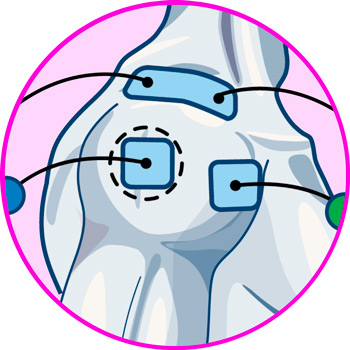
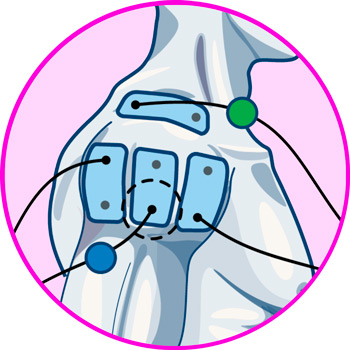

Electrodes for elbow
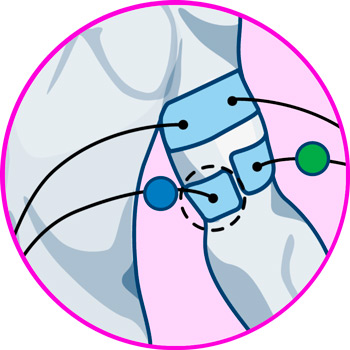

Electrodes for wrist
Electrodes for knee
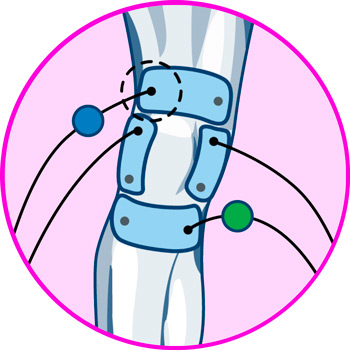

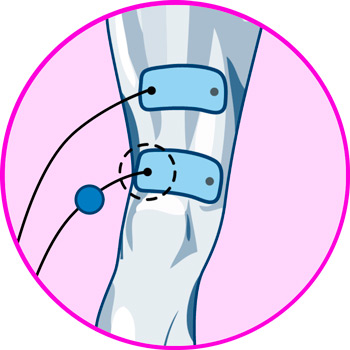
Electrodes for ankle
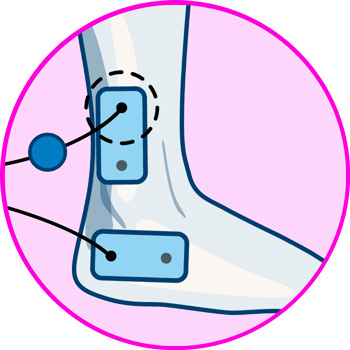

More types of EMS electrostimulators and TENS machines you should know
What is tendonitis and what are the causes?
Tendonitis is defined as a severe inflammation of a tendon, and usually occurs in joints that have been exposed to excessive stress, overload or recurrent injury. It can occur in any joint, although it is most common in shoulders, elbows, wrists, knees and heels.
Among the main causes of tendonitis, we can highlight the following:
Trauma
A sudden injury to a joint can injure it enough to cause the fibrous tissue to swell and generate a stabbing pain, the sensation of stiffness and difficulty of movement characteristic of tendonitis.
The injuries that most commonly lead to tendonitis are:
- Sprains
- Fractures
- Impingement
- Excessive twisting
Overuse
Excess weight on a joint generates stress on the tendon of the joint, and while the tendon strength is almost always sufficient to resist the stress caused, damage can occur.
Repetitive movements
Sports such as swimming or tennis are very common causes of tendinitis due to the fact that these sports consist of repetitive, high-intensity movements that place great stress on the joint.
The sports that report the most cases of tendonitis are:
- Soccer
- Athletics
- Swimming
- Racquet sports
On the other hand, tendonitis is also very common in work environments that promote constant repetition of movements.
Among the jobs that most commonly produce tendinitis, we can find:
- Bricklayers
- Clerks
- Mechanics
- Athletes
Incorrect technique
At this point, regardless of whether it is in the sports field or in the workplace, the performance of repetitive movements coupled with poor technique can accelerate the rate of wear of the fibrous tissue, increasing the possibility of acquiring tendinitis. For example, applying too much tension on the elbow, lifting objects above the head, bending the wrist incorrectly and repetitively.
What are the most common types of tendonitis?
The human body has a large number of joints in which tendons are key parts in their movement, so they are all vulnerable to some extent to tendonitis.
Having said this, it is necessary to highlight that there are joints that are more vulnerable than others, which can suffer from different types of tendonitis depending on the area they affect. Among the most common types of tendinitis we can find:
- Achilles tendonitis is an overuse injury to the Achilles tendon that frequently occurs in runners who make sudden changes in intensity or sudden turns. It can cause a painful sensation above the ankle and stiffness.
- Epicondylitis: Epicondylitis is the inflammation of the epicondyle tendon, located in the elbow. It is very common in athletes who play racquet sports (hence the name tennis elbow), and is characterized by pain on the outside of the elbow.
- Epitrochleitis: inflammation of the epitrochlea tendon, which causes pain, stiffness and swelling on the inner aspect of the elbow and forearm. Similar to epicondylitis, epitrochleitis, or golfer's elbow, is common in those who practice racquet sports, throwing sports or weight training.
- Patellar tendonitis: is an injury that causes inflammation in the tendon that connects the patella and tibia. It is very common in athletes whose disciplines involve jumping, such as volleyball, athletics or basketball. Hence the name "jumper's knee"
- Rotator cuff tendonitis: refers to inflammation of the tendons of this muscle, which can cause pain, visible swelling and limited movement. Its most common cause is repetitive motion overload, which causes wear and tear and subsequent weakness in the tendon area.
Differences between TENS and EMS: Which is better for treating tendon inflammation?
Tendonitis is an injury that can cause considerable pain depending on its severity, so it is necessary to apply treatments to minimize the pain in case it is too intense, in order to facilitate the recovery process.
For this purpose, electrotherapy machines are used, since they have proven to be effective in the treatment of pain in various types of injuries. However, it is important to note that TENS and EMS therapies have very different effects since they are designed for different treatments.
Transcutaneous Electrical Nerve Stimulation (TENS) is a physical therapy modality that uses electrical impulses to treat pain, and is characterized by the following properties:
- It uses low-frequency and low-intensity electrical impulses (between 1 and 250 Hz).
- It interacts directly with the nerve endings of the affected area, blocking the pain receptors of the branches that innervate the area, considerably reducing the sensation of pain.
- It is a method to treat the symptoms, but it cannot directly deal with the injury or disorder that causes them.
- There are a variety of devices of different shapes and intensities focused on treating different areas.
In contrast to this, Electrical Muscle Stimulation (Electrical Muscle Stimulation) or EMS, is a training technique aimed at improving physical condition through electrical impulses that improve muscle resistance and elasticity.
EMS can be identified by the following characteristics:
- Its effect is focused on muscle stimulation by means of electrical impulses.
- It applies discharges with a medium-high intensity that varies between 70 and 150 Hz.
- It can generate indirect stimuli in the nerves due to the muscle contractions generated.
- It is widely used by sports medical teams and high level teams.
These characteristics of each type of therapy allow us to conclude that the appropriate therapy for the treatment of tendonitis pain is TENS therapy, thanks to the fact that its electrical impulses propitiate the relaxation of fibrous tissues, decreasing the sensation of pain and dealing with tendon inflammation.
EMS therapy, on the other hand, is not recommended for the treatment of tendonitis, because its electrical impulses of such intensity generate contractions in the muscles that can be counterproductive for the relief of tendonitis pain, since they can stimulate the nerves adjacent to the affected area.











